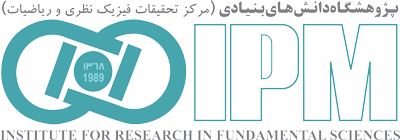“School of Particles And Accelerator”
Back to Papers HomeBack to Papers of School of Particles And Accelerator
| Paper IPM / Particles And Accelerator / 15750 | ||||||||||||||||||||
|
||||||||||||||||||||
| Abstract: | ||||||||||||||||||||
|
In this paper, we explore the constraints that the LHC can place on a massive gauge boson X that predominantly couples to the third generation of fermions. Such a gauge boson arises in scenarios where the B−L of the third generation is gauged. We focus on the mass range 10≤\mx≲, where current constraints are lacking, and develop a dedicated search strategy. For this mass range, we show that b \bar b \tau^+ \tau^-, where at least one of the \taus decay leptonically is the optimal channel to look for the X at the LHC. The QCD production of b quarks, combined with the cleanliness of the leptons coming from the decay of the \tau allow us to detect X gauge boson with couplings of \gx \sim(0.005-0.01), for \mx < 50 \gev, and a coupling of O(0.1) for heavier X gauge boson with 100 \fb^{-1} of integrated luminosity. This is about a factor of 2-10 improvement over previous constraints coming from the decay of \Upsilon \to \tau^+ \tau^-. Extrapolating to the full HL-LHC luminosity of 3000 \fb^{-1}, the bounds on \gx can be enhanced by another factor of \sqrt{2} for \mx < 50 \gev.
Download TeX format |
||||||||||||||||||||
| back to top | ||||||||||||||||||||



















